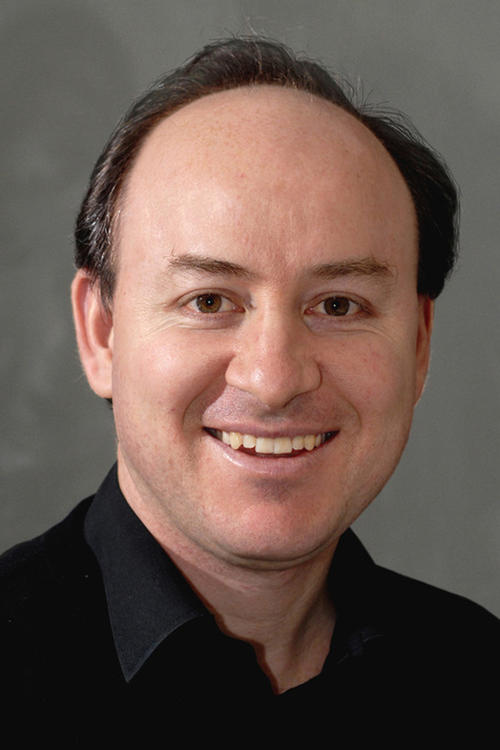Direct Link between Stimulus and Experience
Neuroscientists at Humboldt-Universität and computer scientists at Technische Universität are working together to develop a new theory of sensory perception.
Nov 14, 2018
If a deer suddenly appears in front of your car, you need to react in seconds. How does your brain manage a quick reaction?
Image Credit: Ivana Cajina / Unsplash
Responding at lightning speed can be vital: For example, when a deer unexpectedly jumps in front of the car or when a herd of wild boar suddenly bursts out of the bushes while walking through the woods. Within fractions of a second, the sensory impression is transmitted through a gigantic network of neurons to the part of the brain where corresponding experiences and expectations are anchored. There, the sensory impression is then compared with corresponding experiences and expectations, and a reaction instruction is sent back. Brake! Run away! Don’t move! – as the case may be. This is the classical idea of sensory perception.
But how exactly does the brain combine the external sensory impression (feedforward) with the internal expectation (feedback)? The Australian Matthew Larkum, a neuroscientist at Humboldt-Universität zu Berlin, has developed a theory on this subject: instead of a large network, this happens within certain nerve cells, namely in the pyramidal cells, which are located in the cerebral cortex and are named after the shape of their cell body. “We think these cells have two areas. In one, the information arrives from outside, the expectation is in the other.” Then information and expectation are compared and offset, and the connection between the two “boxes” gives the feedback: It’s exactly what I expected. Or simply: Be careful! Error! I don’t know that one! Within 50 to 100 milliseconds, the most important thing has already happened and the human being reacts.
“We think that we have now actually found the mechanism of perception.” Matthew Larkum
Larkum was able prove his theory through experiments with mice. Using fine electrodes, he succeeded in measuring the lightning-fast response of individual pyramidal cells. The rodents were trained to receive a reward – they were allowed to lick sugar water – after one of their whiskers had been lightly touched. For the experiment, a magnet coated with magnetic paint was used to move a whisker. After the sensory stimulus, the rapid calcium release of the pyramidal cells can be measured. The researchers were also able to optogenetically (i.e., using light) prevent the opening of the calcium channels, thus blocking the mouse’s perception that its whiskers are being touched. And vice versa, by strongly stimulating the cells’ “perception box,” they were able to induce hallucinations in the mice. The result: the mouse licked without its whisker being touched. From these behavioral experiments, Matthew Larkum concludes, “We think that we have now actually found the mechanism of perception.”
Of course, it isn’t just one pyramidal cell that reacts to a sensory stimulus, but thousands, if not millions, in parallel. It’s hard to capture that in an experiment. This is where computer scientist Henning Sprekeler from Technische Universität Berlin comes in. His task is to find differential equations that are as simple as possible and yet precisely and mathematically describe the results of the mouse experiments. “First, we developed the mathematics for one of these cells, then for a network of many cells,” says Henning Sprekeler. “So, we are trying to combine Larkum’s results first on the level of single cells, then thousands, and finally of entire areas of the brain into one image, which is then simulated on the computer.”
It’s a kind of ping-pong of experiment and mathematical refinement.
The neuroscientist can then use experiments with the mice to check the extent to which the predictions apply. In the next round, the computer scientist refines his system of equations – and so on. It’s a kind of ping-pong of experiment and mathematical refinement. The aim of the project is to understand how feedback signals influence perception and which neural circuits the brain uses. For three years since mid-2017, the project called “Functional Role of Feedback in Sensory Representation” has been financed by the Einstein Foundation Berlin.
In the long term, Matthew Larkum’s “two-box theory” could fundamentally change the understanding and treatment of certain mental illnesses, for example, psychoses. “Hallucinations are perhaps nothing more than an overly high expectation of a rather weak sensory impression.” To test this idea, Larkum is currently letting his mice act under the influence of LSD or ketamine. “With autism, on the other hand, we suspect that the other box – the perception of the real world – is too powerful,” explains Larkum. The expectations of autistic people would therefore only be very subordinate, which is why they react hypersensitively to every new sensory stimulus.



